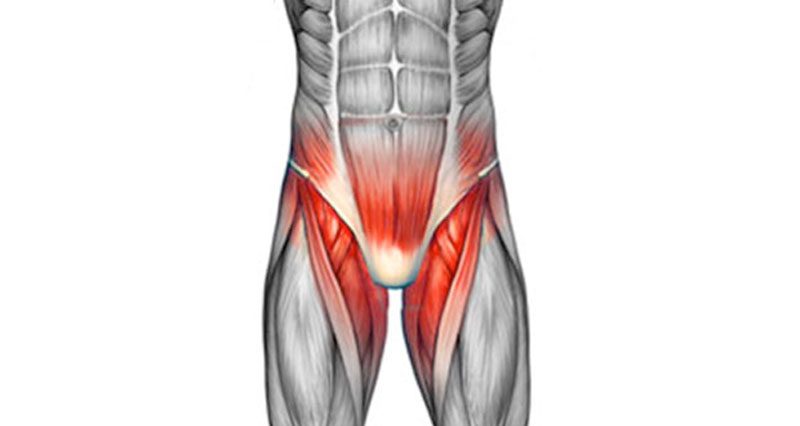Hip Adductor Tendon
Targeted care to relieve chronic groin pain caused by tendon injuries in the hip adductor region.
At a glance
About
Strains or tears in the adductor tendon—often due to overuse or high-impact activity.
Effective
Referrals
Not Needed
Booking
Instant-book option available
Cost
-
Lincolnshire £ 6,500
Nature of hip adductor tendon treatment
Hip adductor tendon treatment focuses on healing the tendon where it attaches to the pelvis. This involves reducing inflammation, promoting tissue repair, and addressing movement limitations. Techniques may include guided injections into the tendon sheath and a tailored rehabilitation program.
Common causes of adductor tendon injuries
Adductor tendon injuries are typically caused by overuse or sudden strain, including:
Overuse from sports: Repetitive stress in sports like football, skating, or gymnastics.
Sudden directional changes: Quick lateral movements can strain or tear the tendon.
Poor flexibility or warm-up: Increases risk during activity.
Direct trauma: Impact injuries to the groin area.
Muscle imbalance: Weak core or hip stabilisers can overload the adductors.
Diagnosing suitability for hip adductor tendon treatment
Diagnosis involves a thorough clinical assessment, focusing on groin tenderness and movement pain. Imaging such as ultrasound or MRI may be used to confirm the extent of tendon damage. Patients who have not improved with rest or physiotherapy are typically good candidates for advanced treatments like guided injections or surgical repair. Your clinician will determine the best approach based on your lifestyle and severity of symptoms.
Suitable for
Adductor tendon strains or tears

Chronic groin pain from overuse or injury

Treatment overview
Treatment for hip adductor tendon injuries focuses on relieving pain and restoring function. Depending on the severity, options may include guided injections to reduce inflammation and stimulate healing, alongside a structured physiotherapy program. In cases where the tendon is significantly damaged, surgical repair may be considered. Early intervention helps prevent chronic pain and long-term limitations.
The hip adductors are a group of muscles on the inner thigh responsible for pulling the leg inward. Strains or tears in the adductor tendon—often due to overuse or high-impact activity—can cause persistent groin pain and reduced mobility. This condition is common in athletes and individuals performing frequent twisting or cutting motions.

Benefits

Reduces groin pain and discomfort

Improves strength and flexibility

Supports tendon healing

Minimally invasive treatment options

Helps restore normal movement patterns
How to Pay
We offer a range of flexible payment options to make your treatment experience smooth and stress-free.
Paying for Yourself (Preferred Option)
Most patients choose to self-fund their treatment. We accept:
- Bank Transfers
- Credit/Debit Cards
- Cash (in person only)
Instalment Plans
We’ve partnered with GoCardless to offer interest-free instalment options. You can easily set up a Direct Debit to spread the cost of your treatment over time.
Finance Options
Looking for a financing plan? You can apply through Kandoo, our trusted finance partner.
- Instant online decision
- No impact on your credit score
- Multiple lenders for competitive rates
Private Medical Insurance (Limited Availability)
We work with a small number of approved insurance providers. However, due to restrictions from many insurers, not all treatments are covered. Please check with your insurer and speak to our team before booking to avoid disappointment.
The booking process
Online booking/call
Use our Calendly to book an initial consultation, or give us a call.
01
Consult
If you are a new patient, our doctors might arrange a consultation before treatment.
02
Treatment
You will be booked in for treatment.
03
Follow up
Our doctors might arrange a follow-up consultation, to check your response to treatment.
04
Discharge
Once your doctor is happy with your recovery, you will be discharged. After discharge, we are always here for further questions or support, should you need it.
05
Frequently Asked Questions
How long does recovery take from an adductor tendon injury?
Mild injuries may heal in a few weeks, but chronic or severe tears can take several months.
Do I always need surgery for a tendon tear?
No. Many cases respond well to non-surgical treatments like injections and physiotherapy.
Is this a common injury in athletes?
Yes. It’s particularly common in football, hockey, and running due to high stress on the groin.
Schedule A Discovery Call With Us
Don’t wait to find relief. Whether it’s a consultation, scan, or treatment, we’re ready to help.






